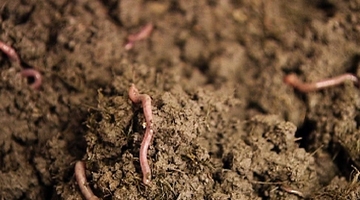The earthworm’s body is well adapted for life in the soil. Click on the labels to see images and learn more.
Select the green button to see what’s on the inside of an earthworm.
Go here to view the full transcript and copyright information.

The earthworm’s body is well adapted for life in the soil. Click on the labels to see images and learn more. Select the green button to see what’s on the inside of an earthworm.
Learn more about Earthworm adaptations.
Transcript
Anterior
The ‘head’ or front of the earthworm is called its anterior.
Acknowledgement: Ross Gray
Prostomium and mouth
The first segment on the earthworm’s anterior holds the prostomium and mouth. The prostomium, resembling a lip, is in front of the mouth. Earthworms use their pharynx to pull food into their mouths.
Acknowledgement: Giles san Martin
Skin
Earthworms breathe and lose moisture through the skin. Light-sensitive cells are scattered in their skin. They give skin the ability to detect light and changes in light intensity. Skin cells are also sensitive to touch and chemicals.
Acknowledgement: The University of Waikato Te Whare Wānanga o Waikato
Segment
The body is divided into segments. These resemble rings. Large earthworms are made up of hundreds of segments.
Acknowledgement: 123RF.com
Setae
Each segment has a number of bristly hairs that earthworms use to help them move. Sometimes, if you run your fingers on the underside (ventral) of the earthworm, you can feel the setae.
Acknowledgement: The University of Waikato Te Whare Wānanga o Waikato
Clitellum
The glandular ring or saddle found on mature earthworms. After mating, the clitellum secretes a cocoon of eggs.
Acknowledgement: Ross Gray
Dorsal
The top of the earthworm running from the anterior to the posterior.
Acknowledgement: Ross Gray
Ventral
The underside of the earthworm running from the anterior to the posterior. You can locate the ventral section by feeling for the setae.
Acknowledgement: Adam Hart-Davis
Anus
The posterior (last) segment of the earthworm’s body. The anus excretes wastes (worm casts).
Acknowledgement: Robert Lamberts


